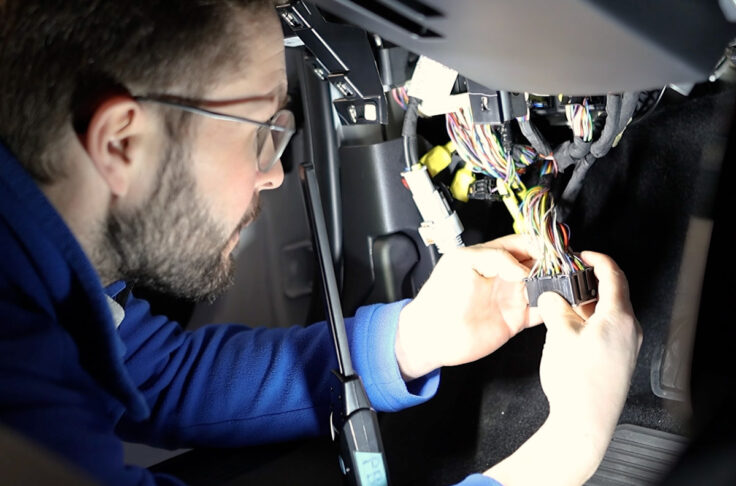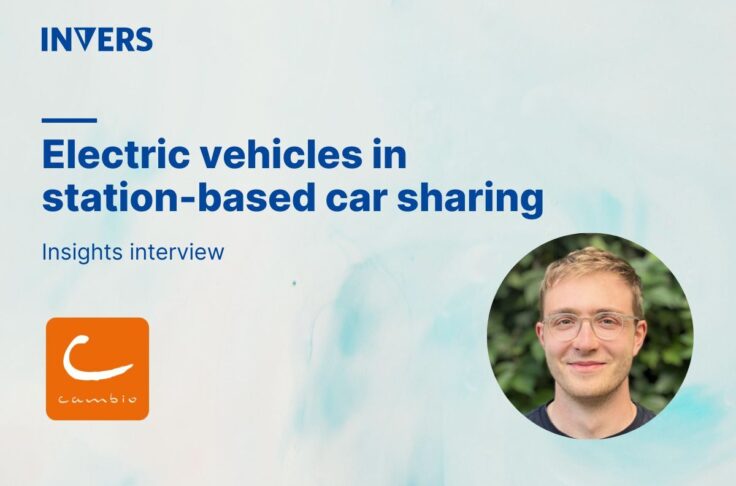The future of electric vehicles in the car sharing industry

According to the International Energy Agency’s (IEA) Global EV Outlook 2024, global EV sales rose by over 25% in the first quarter of 2024 compared to the same time in 2023. Major automakers responded by significantly ramping up EV production throughout the year, showcasing a rising demand for electrification. While year-end numbers are still pending, today, one in four European station-based and free-floating car sharing services operate all-electric fleets. However, the future of electric vehicles in car sharing isn’t without challenges, especially in areas where strict regulations are combined with little support for electrification.
In this article, we’ll explore some of these hurdles and the innovative strategies to keep pace with an industry primed for greater electrification in 2025 and beyond.
Table of Contents
Adoption of electric vehicles in car sharing
There has been a big push for mobility decarbonization as many countries and cities worldwide are planning to phase out the sale of fossil fuel-powered vehicles, including cars and buses, to reduce pollution and meet greenhouse gas reduction targets under international agreements like the Paris Agreement.
Europe
Europe has seen significant growth in EV adoption for car sharing:
- In London, Zipcar is increasing the number of electric vehicles in their fleet as part of a larger plan to achieve net-zero emissions by 2050.
- 20.5% of all car sharing vehicles in Germany are EVs. (German Car Sharing Association)
- Electric vehicles accounted for over 25% of the car sharing fleet in Italy. (Osservatorio Nazionale)
- 14% of car sharing vehicles in the UK are electric (CoMoUK)
Europe remains one of the most advanced EV markets, with projections showing:
- Electric light-duty vehicle sales reaching nearly 60% by 2030 and 85% by 2035
- Electric bus sales expected to reach around 80% by 2035
- Electric truck sales projected to reach almost 45% by 2035
North America
The adoption of EVs in car sharing is progressing more slowly in North America compared to Europe:
- Zipcar has initiated a substantial EV program across several major U.S. cities, planning to double its current EV fleet size by 2024
- In Canada, smaller companies are filling the gaps in the EV rental market as larger companies like Enterprise and Avis only offer electric rentals in the United States
- Communauto, a Quebec-based car sharing company, added 100 new electric Kia Niros to its fleet in 2022
Challenges of e-mobility
Despite rising adoption of EVs, there are still major obstacles to electrification. In 2025, car sharing companies will face the following five major obstacles:
1. Gaps in charging infrastructures
Infrastructure is still not uniformly dispersed, particularly in rural regions. “Charging deserts” limit EV usage, exacerbate range anxiety, and create downtime for operators. Expanding ultra-fast chargers and optimizing station placement are essential to resolving these issues.
Impact: Particularly in underserved areas, inadequate infrastructure reduces user confidence and impedes fleet utilization and rebalancing.
2. Supply chain and battery material limitations
While shortages in semiconductors continue to cause production schedule disruptions, critical minerals such as cobalt and lithium are subject to geopolitical risks and unpredictable pricing. These supply chain problems delay fleet electrification and drive up costs.
Impact: Large-scale electrification is more difficult, especially for smaller businesses, due to higher vehicle costs and erratic supply schedules.
3. High purchase prices and uncertain residual values
According to the IEA, the used EV market is maturing, with over 450,000 vehicles sold in France, Germany, Italy, Spain, the Netherlands, and the United Kingdom in 2023, and about 400,000 vehicles sold in the United States. Although countries like the United States, Canada, Norway, and the Netherlands offer tax credits or rebates to offset costs, smaller operators still struggle to justify the investment—especially as new EV prices remain high and regional subsidies vary.
Impact: Operators must carefully assess total cost of ownership. The business case for rapid, widespread EV adoption may be more difficult to defend in the absence of consistent incentives.
Tip: Check out how operators are using telematic insights to track vehicle health and adjust depreciation calculations based on real-world data, improving financial forecasting.
4. Complex maintenance and skills shortages
EVs require less routine maintenance than ICE vehicles, but repairs—such as battery replacements and sensor recalibration—demand specialized skills. While shortages of trained technicians inflate costs, manufacturers and dealerships are stepping up by offering EV-specific training and tools, signaling a broader industry shift.
Impact: Partnering with forward-thinking dealerships and investing in workforce development is critical for managing maintenance costs effectively.
5. Fragmented policies and regulatory uncertainty
The lack of unified global standards for electrification leaves operators navigating a patchwork of regulations. Varying incentive structures and sudden policy shifts create uncertainty, complicating long-term planning for multi-city operations. Moreover, if and when governments abruptly shift course—either expanding or retracting EV support—operators are left scrambling to adjust their strategies, injecting further uncertainty into long-term planning.
Impact: Multi-jurisdictional car sharing fleets face increased administrative and compliance costs.
Road to electrification in 2025
As GM CEO Mary Barra noted in 2022, “Electrification will be a catalyst for a range of new experiences.” This transformative period demands strategic planning and bold innovation. Here’s how operators can prepare:
1. Continued cost reductions and technological advancements
Battery prices—a key driver of EV affordability—are expected to continue declining, driven by ongoing improvements in lithium-ion technology and research into next-generation chemistries like solid-state batteries. At the same time, car sharing fleets stand to benefit from more reliable and efficient charging solutions, including ultra-fast chargers and wireless charging pilots. Over the next few years, these technologies will further reduce range anxiety and operational downtime, making electric car sharing more convenient than ever before.
2. Evolving policy and incentive landscapes
Governments are increasingly committed to zero-emission transportation, creating opportunities for operators to align with subsidies and grants. While operators can expect incentives to help offset EV purchase and charging infrastructure costs in some regions, these policies will continue to vary widely. Nonetheless, overarching environmental targets—especially in Europe and parts of North America—create a strong impetus for rapid fleet electrification. Policymakers are also focusing more on equitable access to charging, potentially leading to publicly funded projects that expand infrastructure beyond city centers.
3. Expansion into underserved markets
Most EV-focused car sharing services have so far thrived in dense urban hubs with strong infrastructure. As charging networks expand, rural and suburban markets present untapped opportunities for growth and user acquisition. Local authorities are also incentivizing clean transportation solutions in these regions, further enhancing market potential.
4. Integration with autonomous mobility
Although fully autonomous vehicles (AVs) are not yet widespread, the groundwork is being laid for a future in which EVs, car sharing, and autonomous driving converge. Some operators are already testing automated features—such as remote parking or “valet mode”—to streamline fleet logistics. As these technologies mature, fleets could become self-deploying and self-charging, reducing downtime and operational complexity. In turn, this innovation cycle may accelerate EV adoption, as advanced connectivity and autonomy often pair more naturally with electric drivetrains.
5. Collaboration and public-private partnerships
Public-private partnerships with municipalities, automakers, and energy providers will be crucial in overcoming infrastructural and financial barriers. We’ll likely see more joint ventures between automakers, charging companies, and local governments to ensure that the next wave of electrification is both profitable for businesses and beneficial to communities in terms of air quality and mobility equity.
Charging ahead – the future of electric vehicles in car sharing
Electrification in car sharing is no longer a question of if but how fast. Despite ongoing challenges, the benefits of EV adoption remain undeniable. With strategic planning, collaboration, and the right technology, operators can lead the charge into a sustainable, electrified future.
Explore other car sharing industry trends of 2025. Want to be notified about future webinars and articles on trends, fleet management, and car sharing? Sign up for our news updates!


